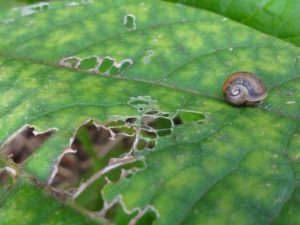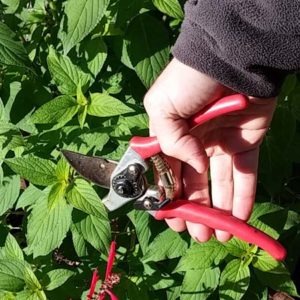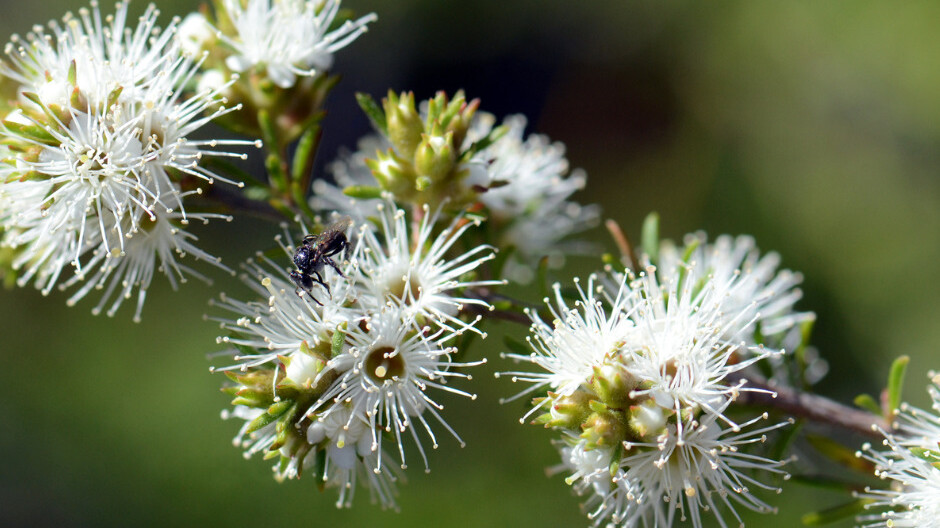In the 1980’s, mentioning that plants could communicate or that they might be intelligent used to draw the response “Are you crazy?” when this was then proposed by scientists. Perhaps this reply derived from “hippy” suggestions that we should talk to our plants to make them grow better. But now there is solid evidence the plants can, indeed, respond to information in the rest of the world, respond to those messages in a variety of ways including sending messages to each other. The idea is emerging that the plant kingdom is a complex society in which members share information and subsequently respond, in a way similar to we do in human society, but using different languages1. Some scientists, therefore, suggest that plants possess intelligence2.
Plants show a number of behaviours that appear to be more than just a simple stimulus and response, but which involve communication both within and between plants. They respond to temperature, gravity, light, moisture, infections, concentrations of oxygen and carbon dioxide, predation, physical damage and touch. Let’s look at some of these in more detail.
Defending from attack
Early studies of willows, poplars and sugar maples showed that trees near those that were being attacked by insects started to release a range of chemicals which acted as repellents to those insects – somehow they “knew” that they were threatened by attack themselves. Others plants whose shoots were infected by disease, could release gases into the air which signalled the threat to plants close by so stimulating them to strengthen their own chemical defences. The gaseous chemicals released were different for different types of injury.
 Some plants have more complex “behaviours”. For example, some whose roots were being attacked released gaseous substances which attracted nematodes which then killed the predator3. Others could interact with ants which protect them against attack by organisms which eat them, against disease and against competing plants4.
Some plants have more complex “behaviours”. For example, some whose roots were being attacked released gaseous substances which attracted nematodes which then killed the predator3. Others could interact with ants which protect them against attack by organisms which eat them, against disease and against competing plants4.
After hornworm attack, one species of the tobacco plant accumulated nicotine which blocked particular nerve receptors in other predators reducing their ability to attack the plant. Some of the chemicals used in transferring information between plant cells are the same as those found in humans.
When sagebrush plants were clipped they produced a gaseous chemical (methyl jasmonate) that stimulated neighbouring wild tobacco plants to increase their defensive biochemistry. These tobacco plants were then more resistant to subsequent attack by grasshoppers and cutworms5.
 So would this mean that having a hedge, which we clipped regularly, near our veggie patch would reduce insect attack? An intriguing but, as yet, unproven possibility.
So would this mean that having a hedge, which we clipped regularly, near our veggie patch would reduce insect attack? An intriguing but, as yet, unproven possibility.
Ensuring reproduction
Plants have developed strategies to increase their reproductive chances. It was, in fact, Charles Darwin in the 1860s, who wrote that plants had “responded” to the characteristics of birds and insects so that their sexual organs were appropriately shaped to allow access for pollination3. These pollinators were then “rewarded” with nectar which was attractive to those pollinators and essential to their diets.
Some species of the Arum family produce a dung-like odour – exactly the same chemicals that are exuded from dung where the insects necessary for pollination of the Arum plants gather.
Nutrition
Most of us are aware that members of the Fabaceae (legumes such as peas and beans) “domesticate” the Rhizobium bacteria in nodules on their roots in return for supply of nitrogen which the bacteria can fix from the atmosphere. It seems too, that the Rhizobium bacteria produce hormones, cytokinins and auxins, which affect how the plant root behaves in growing to seek nutrients6.
Mycorrhiza as information networks
Perhaps even more interesting is how plants communicate through mycorrhizal networks. These are filaments of fungus that either penetrate the cells of plant roots, or sit on their surface. It is thought that 80 – 90% of plants have mycorrhizal associations7 and there are many tens of metres of filaments per gram of soil. These filamentous networks are better at absorbing water and nutrients than the plants themselves and thus they transport and exchange these compounds, increasing their absorption by plants up to 1000 fold.
They also facilitate sending “messages” between plants. Experiments have shown that bean plants infested with aphids can send signals to other plants when above-ground communication was blocked by physical barriers. The plants receiving the messages then produced chemicals which attracted other insects which were predators of the aphids8.
Nerve-like signaling within plants
It is well established that electrical as well as chemical signals are transmitted through plants in response to various stimuli such as damage. These signals seem to be via waves of reactive oxygen molecules and calcium ions. Although signaling in the nerve systems of the animal kingdom is mediated through potassium and sodium ion movement, the overall mechanism is similar9.
Very recent work from Australia researchers has shown that when plants are touched by humans, tools or even insects, their equivalent of an immune system is turned on and, because that uses plant resources, it can cause reduction in growth10. However, earlier research has shown that rubbing the leaves of can stimulate some plants defend themselves from fungal attack – also via this immune system-like pathway.11
Implications
Researchers are not claiming that plants have brains or can think rationally, but that they communicate in many ways that have similarities to human communication and intelligence. We should understand this if we are to both care for plants and benefit from them.
These studies provide a scientific basis for companion planting where certain plants have been observed to protect others from predation or disease. It’s not clear yet whether we might intentionally damage some plants, or plant sacrificial crops, in order that they alert others to strengthen their defences. But we should probably be gentle with the soil everywhere in gardens and forests so that the benefits of communication through mycorrhizal networks are not destroyed.
References
- McGowan K. 2013. How plants secretly talk to each other. Wired 12: 13.
- Trewavas A. 2005. Green Plants as Intelligent Organisms. Trends in Plant Science 10: 413-419.
- Baluška F, Mancuso S, Volkmann D (Eds.) 2006. Communication in Plants. Neuronal Aspects of Plant Life. Springer Verlag.
- Brouat C, Garcia N, Andarry C, McKey D. 2001. Plant lock and ant key: pairwise coevolution of an exclusion filter in an ant-plant mutualism. Proc R Soc Lond Ser B 268: 2131–2141.
- Karban R et al. 2000. Communication between plants: induced resistance in wild tobacco plants following clipping of neighboring sagebrush. Oecologia 125: 66-71.
- Castro O, Bucio J L. 2013. Small Molecules Involved in Transkingdom Communication between Plants and Rhizobacteria, in Molecular Microbial Ecology of the Rhizosphere: Volume 1 & 2 (ed F. J. de Bruijn), John Wiley & Sons, Inc., Hoboken, NJ, USA. doi: 10.1002/9781118297674.ch28
- Australian National Herbarium. 2013. https://www.anbg.gov.au/fungi/mycorrhiza.html
- Babikova Z et al. 2013. Underground signals carried through common mycelial networks warn neighbouring plants of aphid attack. Ecology Letters 16: 835–843.
- Choi W et al. 2016. Rapid, Long-Distance Electrical and Calcium Signaling in Plants. Annual Review of Plant Biology 67: 287-307.
- Yue Xu et al. 2018. Mitochondrial function modulates touch signalling in Arabidopsis thaliana. https://doi.org/10.1111/tpj.14183
- Benikhle L., et al. 2013. Perception of soft mechanical stress in Arabidopsis leaves activates disease resistance. BMC Plant Biology13:133.
Related Articles:
Wildflower gardens – What’s the buzz about?
In the quest for sustainable and environmentally conscious practices, gardening enthusiasts and nature lovers alike are turning to a time-tested…
Why Living Trees Suddenly Fall Down
It is quite common that in winter or after big storms we wonder why living trees suddenly fall down. In June 2021 in Victoria, savage storms swept…



